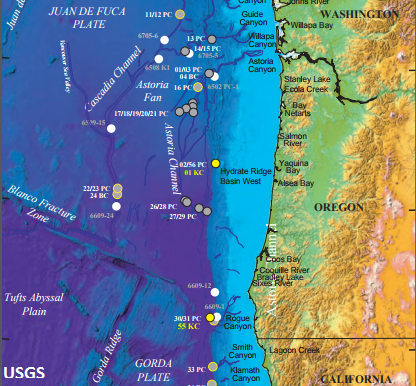Lessons for Oregon from a Post-Maria Puerto Rico
A series of strong hurricanes devastated parts of the southern United States in 2017. The latest, Hurricane Maria, has left the entire island of Puerto Rico – home to 3.5 million people – without electricity. Experts report that Puerto Ricans may be without power for months. Could Oregon face a situation like the one in Puerto Rico?
“Unfortunately, yes,” says Oregon Department of Energy Senior Policy Analyst Adam Schultz. “We know that the Pacific Northwest will face severe impacts from the geologically overdue Cascadia Subduction Zone earthquake. Geologists tell us that a 9.0 megathrust earthquake could occur at any time. When, not if, it happens, it is likely to devastate our infrastructure and will leave many Oregonians without reliable access to basic services, like water and electricity, possibly for months. Post-Maria Puerto Rico should be viewed as a canary in the coal mine for how Oregon might look after the Cascadia earthquake.”
Fortunately, Oregon state agencies are working with utilities and other stakeholders toward boosting the state’s resiliency – a term used to measure how quickly services can withstand and bounce back after an emergency.
The Oregon Department of Energy is a responding agency in the event of an emergency in our state. We are finalizing a Fuel Action Plan to prepare for severe or long-term petroleum shortages or disruptions that could affect us, since all of Oregon’s refined petroleum products come from other states. The Fuel Action Plan will outline how we would access fuel after an emergency, and how we would distribute it to emergency responders and other essential services.
We have also been working with Central Lincoln People’s Utility District on an 18-month Policy Academy on Grid Modernization through the National Governors Association’s Center for Best Practices. As part of the Academy, ODOE and Central Lincoln PUD are developing a framework for how local utilities and communities can prioritize local energy resiliency investments that can better position communities for catastrophic events, from the Cascadia Earthquake to wildfires, wind, ice storms, or cyberattacks.
Thinking about an emergency is hard – and unsettling. Here at ODOE, we’ll continue working with communities and fellow public agencies so Oregon is better prepared for the “Big One.”
As Governor Kate Brown shared last year, “The prospect of a major earthquake and tsunami may seem so overwhelming that preparation – by individual Oregonians or their state government – is too big of a task. But, we can do this and we will do it together. We must build a better prepared and more resilient Oregon, one step at a time.”
Feeling unprepared? Making sure you and your family are ready before an emergency hits is the best course of action you can take. We recently shared tips for September’s National Preparedness Month – check them out.
Feature photo courtesy of Flickr user Martin Luff, via CreativeCommons.


